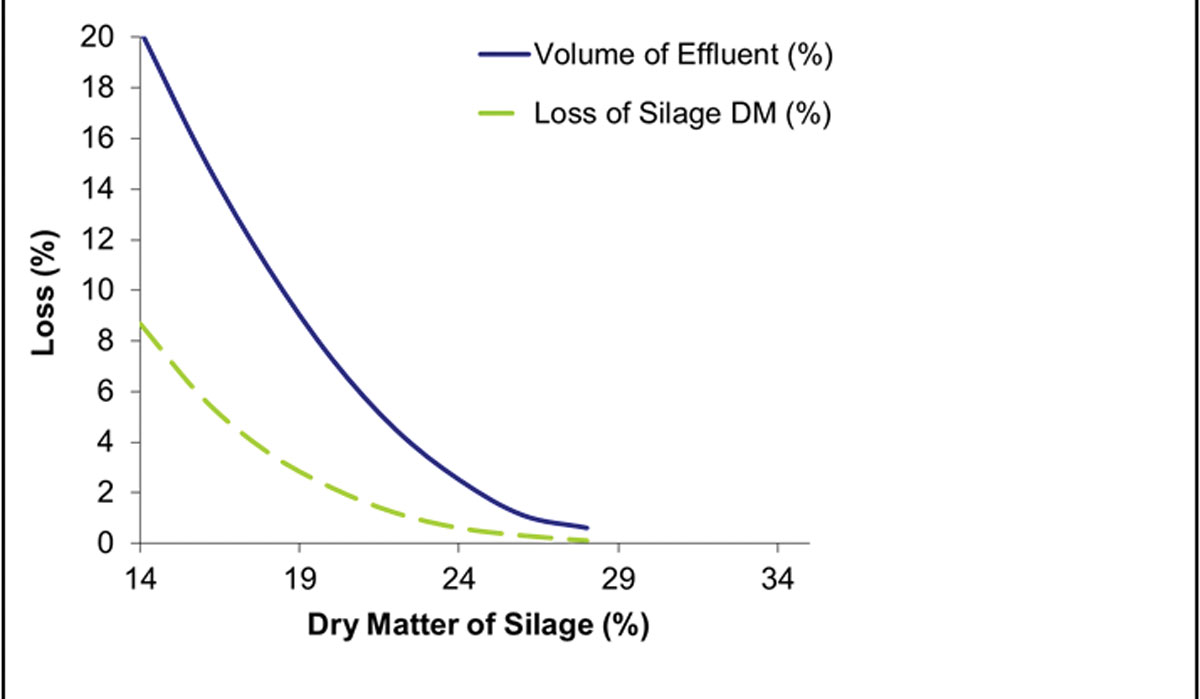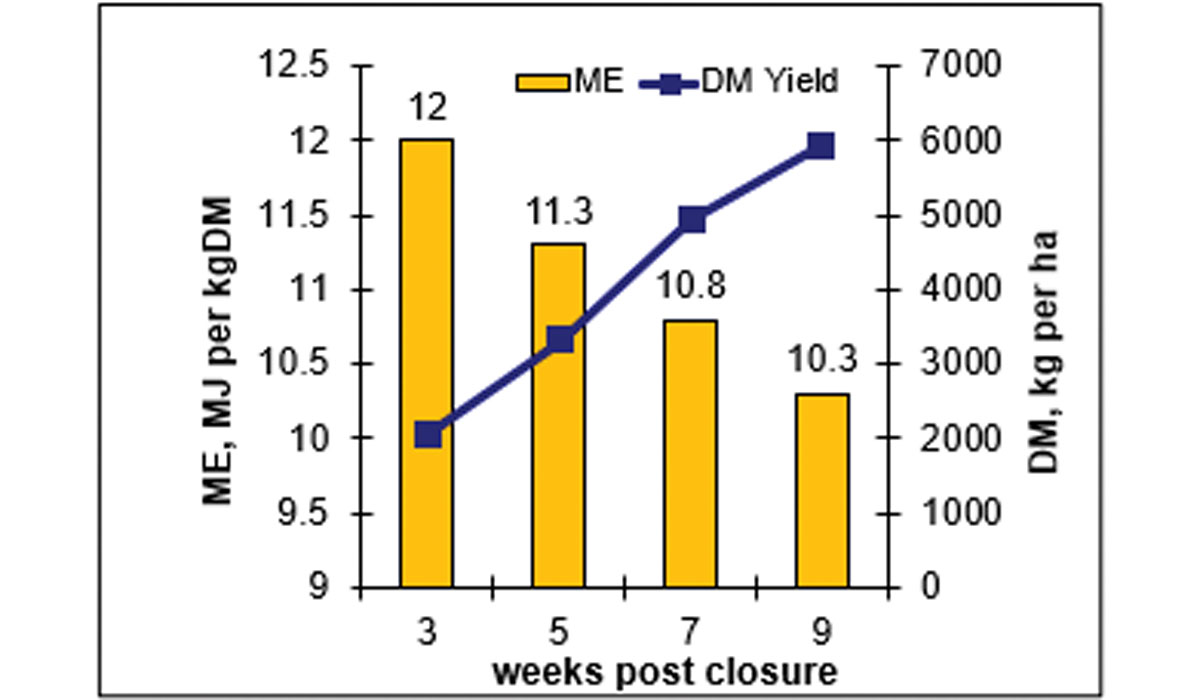Hitting heifer liveweight targets
Early December marks a key transition for many dairy farmers, as weaned replacement heifers head off-farm to grazing.
By the middle of September, the grass silage making season will be well underway.
It will start on permanent cropping land with farmers harvesting annual ryegrass crops before the area is replanted in maize, and will continue on dairy farms as they move past balance date and begin to develop a pasture surplus. Well-made, high-quality grass silage is one of the most valuable feeds available to farmers. It will be high in energy and protein, and as a stored feed it can be one of the most flexible feeds in the farmer's toolbox to fill summer feed deficits. I am going to go into the mechanics of making great silage as this is well covered elsewhere (see https://www.pioneer.co.nz/inoculants/product-information/how-to-make-quality-pasture-cereal-and-lucerne-silage-guide/making-quality-silage or https://www.dairynz.co.nz/feed/supplements/grass-silage/ ).
While we all understand the mechanics of making high quality silage, it is hard to put them into practice. We know good planning and good communication with the silage contractor increases the chance of making high quality grass silage. However, it is hard to plan for the biggest risk factor to making great silage - the weather. Good planning and communication increase the chance that the contractor will be available when the grass is at optimal quality. However, it all comes to nothing if the weather doesn't play ball, when the question is often asked, "Do I take my silage early (i.e. cut followed by little or no wilting) or do I leave it a bit later when the weather might be more stable?"
Too dry or too wet?
Theoretically, the ideal harvest drymatter for pasture silage is somewhere above 28%, as this is where the risk of losses through leachate are significantly reduced (see Figure 1).
 |
|---|
|
Figure 1. Leachate losses from pasture silage vs pasture drymatter (from Bastiman & Altmann, 1985) |
Leachate from grass silage is particularly problematic. Not only is it full of soluble sugar (and therefore energy) that can be used by the cow to produce milk, it is also very dangerous to aquatic life due to its high biological oxygen demand (BOD). Depending on the concentration of leachate, a small amount of Leachate (1 litre) in a large amount of water (10,000 litres) can threaten fish survival. Because of this, every regional council requires farmers to prevent silage leachate from entering waterways. It is important to see what the rules are for your region and make sure that you comply.
Practically speaking, the ideal harvest drymatter window is somewhere between 25% - 40% DM. Below 25%, the leachate losses increase substantially, while harvesting too dry can also be problematic. Over-wilted grass (above 40%) is difficult to compact into a bunker or stack, therefore increasing the aerobic losses.
Harvest time and quality
The next question then is "If it is not too smart to cut the grass and harvest it too wet, is it better to leave it growing until a safer weather window comes along? And if I do this, how much quality do I lose?" A former DairyNZ scientist, Dr Justine McGrath, published some data which shows the loss of grass quality over time (see Figure 2).
 |
|---|
|
Figure 2. Pasture quantity vs quality (from McGrath et al, 1998) |
This clearly shows that while there is quality loss as the pasture matures, the loss of quality isn't that great over a 2-week period and some of the loss in quality is compensated for by a gain in quantity.
So, if the weather doesn't allow to harvest the silage at the perfect time, it isn't a disaster. To reduce the risk of leachate loss, it is better to wait a couple of weeks and harvest when the weather allows for the grass to be sufficiently wilted, to ensure reduced risk of leachate loss.
Ian Williams is a Pioneer forage specialist. Contact him at This email address is being protected from spambots. You need JavaScript enabled to view it..
|
A landmark moment for New Zealand. That's how Prime Minister Christopher Luxon describes the conclusion of negotiations for an India-New Zealand Free Trade Agreement. Beef Progeny Test 2025: Genetic insights for NZ beef industryAt Pāmu’s Kepler Farm in Manapouri, mating has wrapped up at the across-breed Beef Progeny Test. HortNZ celebrates 20 YearsMore than 150 people turned up at Parliament recently to celebrate the 20th anniversary of Horticulture New Zealand (HortNZ). Biosecurity NZ urges vigilance for yellow-legged hornetsBiosecurity New Zealand says Kiwis should continue to keep an eye out for yellow-legged hornets (Vespa velutina) over the holiday season. Mental Health and Fitness Unite: The Push-Up Challenge comes to New ZealandThe Push-Up Challenge, an event which combines mental health and fitness, is set to launch in New Zealand in 2026. Agritechnica 2025: Claas, Fendt and Valtra claim 2026 Tractor of the Year AwardsLast month's Agritechnica event led to a wide group of manufacturers celebrating successes when the 2026 Tractor of the Year Competition winners, selected by a panel of European journalists, were announced in Hanover Germany. NationalFonterra capital return could boost GDP – ANZ ReportThe Fonterra divestment capital return should provide “a tailwind to GDP growth” next year, according to a new ANZ NZ report,…Fonterra upgrades Eltham cheese production for global growthFonterra's Eltham site in Taranaki is stepping up its global impact with an upgrade to its processed cheese production lines,…Michelle Pye elected to Fonterra boardCanterbury farmer Michelle Pye has been elected to Fonterra’s board for a three-year term.Government plan to scrap regional councils faces criticismGovernment plans to get rid of regional councillors shows a lack of understanding of the fundamental problem affecting all of…Lactose to join fat and protein in Fonterra milk price modelFor over 20 years, Whakatane farmer Gerard Van Beek has been attending Fonterra annual general meetings with the same message…Machinery & ProductsCase IH Unveils New RB6 Round Balers & 2026 Square Baler UpgradesCase IH has released details of its all-new round balers and redesigns to its large square balers aimed at increasing…How to Improve Milking Efficiency in Swing-Over Herringbone ShedsThe swing-over herringbone is the most common dairy type in New Zealand, used on 69% of dairy farms. Simple changes…Claas Jaguar 1000 Series sets new forage harvesting world recordThe recently released Claas Jaguar 1000 Series has seen its flagship 1200 set a new official Guiness World Record in…CB Norwood appoints John Skurr as new general managerCB Norwood Distributors Limited has announced the appointment of John Skurr to the position of general manager.AIMER, Bovonic and Herd-i join forces to advance NZ dairy techThree New Zealand agritech companies are set to join forces to help unlock the full potential of technology.» Latest Print Issues OnlineMilking ItTrump's tariffsPresident Donald Trump’s decision to impose tariffs on imports into the US is doing good things for global trade, according… Tanker on the rollSeen a giant cheese roll rolling along Southland’s roads? » eNewsletter |